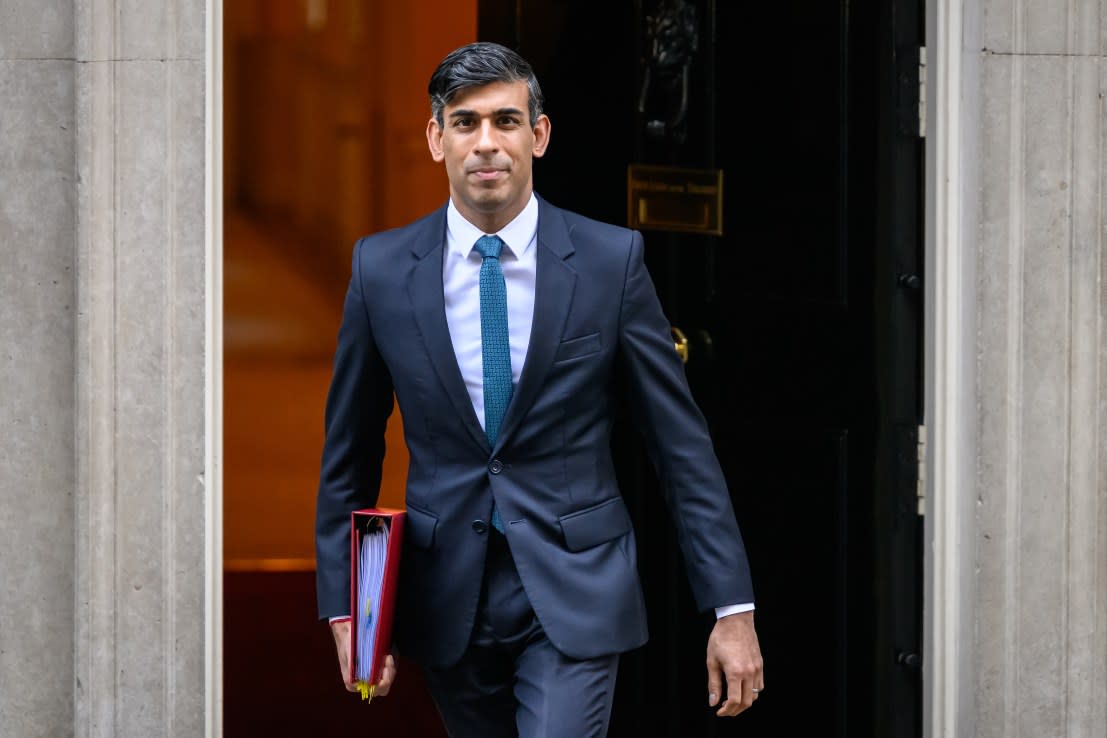From Rwanda to inflation, Sunak has tied himself to pledges he can’t control

Sunak wants to be seen as reliable, so he has made sure his pledges have nothing to do with him, writes Simon Neville
When Rishi Sunak laid out his famous five pledges – halve inflation, grow the economy, reduce debt, cut waiting lists, stop the boats – it was noticeable the order he put them in.
For a party that seems determined to tear itself apart over immigration, one would have thought the last pledge should be higher up.
But the Conservatives have an impressive track record on slogans and campaign messages, and this was no accident. Just ask the new foreign secretary – himself a former PR man.
The importance of the pledge order became all the more apparent with the Supreme Court ruling his Rwanda plan is illegal and the ONS ruling that inflation fell below five per cent both coming out on the same day. They are also the two he has the least personal control over.
Big green tick for Pledge Number One, big red mark next to Pledge Number Five, and it is clear the Prime Minister hopes to tick the remaining pledges off in the order that they come.
Cutting inflation was always going to be the easiest of his five pledges; immigration was always going to be the hardest. Last night’s plans to introduce emergency legislation shows a Prime Minster desperately trying to grip a policy successive governments have failed to tackle – or at least repeat the planned policy and hope the messaging lands even if a plane to Rwanda never manages to.
Before entering politics, Sunak was a man of numbers, working initially for Goldman Sachs and then for a series of hedge funds. It is fair to say he would have needed a firm grasp of understanding data, how the global economy works and where politicians can and cannot influence the economy.
Therefore, he must have known that inflation could never stay at 10.7 per cent when he first unveiled the pledges back in January. If it had stayed in double digits he would be out of office, making enquiries to get his old Green Card back and asking his new bestie, Elon Musk, for a job.
The Bank of England said inflation levels would halve, as did every economist, with all pointing out that the inflationary pressures globally – high energy prices – were all but certain to fall from the spikes seen at the start of Russia’s invasion of Ukraine.
When they dropped, Ofgem cut the energy price cap and inflation subsequently fell.
So, unless the PM wants to start claiming his government tried to interfere with the decisions of an independent regulator, it is hard to see what policy he enacted that contributed to the inflation rate we have today.
But maybe that’s the point.
Perhaps the endless repetition of the five pledges IS the policy because Sunak knows the government has no power over reducing inflation.
Instead, the policy of repetition was needed because there were no other options and at least this route might convince the voting public that it was all his doing.
If that was the plan, then Wednesday’s announcement was an overwhelming success. Pledge hit. Job done. Onto the next.
Presentation is key and Sunak is aware that since becoming PM his primary job has been to steady the markets after Liz Truss tanked them.
He knows that soothing words and steady actions is all he can do – a message that will no doubt be re-enforced at next week’s Autumn Statement, which is set to be a snoozefest– and maybe that’s ok.
Just ask Bank of England Governor Andrew Bailey, who also knows raising interest rates might only have a limited impact on inflation.
But he had to do it, to show to the outside world the UK wasn’t an outlier and would follow whatever path the US Fed laid out.
In Downing Street and Threadneedle Street, stability will always be top of the agenda. It calms markets, stimulates investment and, ultimately, leads to growth which is, helpfully, Sunak’s pledge number two.
So what comes next?
A little bit of chest beating from Tory MPs on the back of “Sunak meets inflation target” headlines and statesman-like “there is still work to do” is no doubt on its way.
But we can also expect this close to an election to see even more reliance on honing messages rather than introducing new policies.
Sunak will know that his best chance of salvaging his party’s position is by selling to the public his immense efforts in hitting the remaining pledges, regardless of whether he has control over growing the economy or reducing debt.
Then maybe, just maybe, he will get to the election being able to say “more than half of my pledges have been met” and hope that will do for enough of the electorate.

 Yahoo News
Yahoo News 
